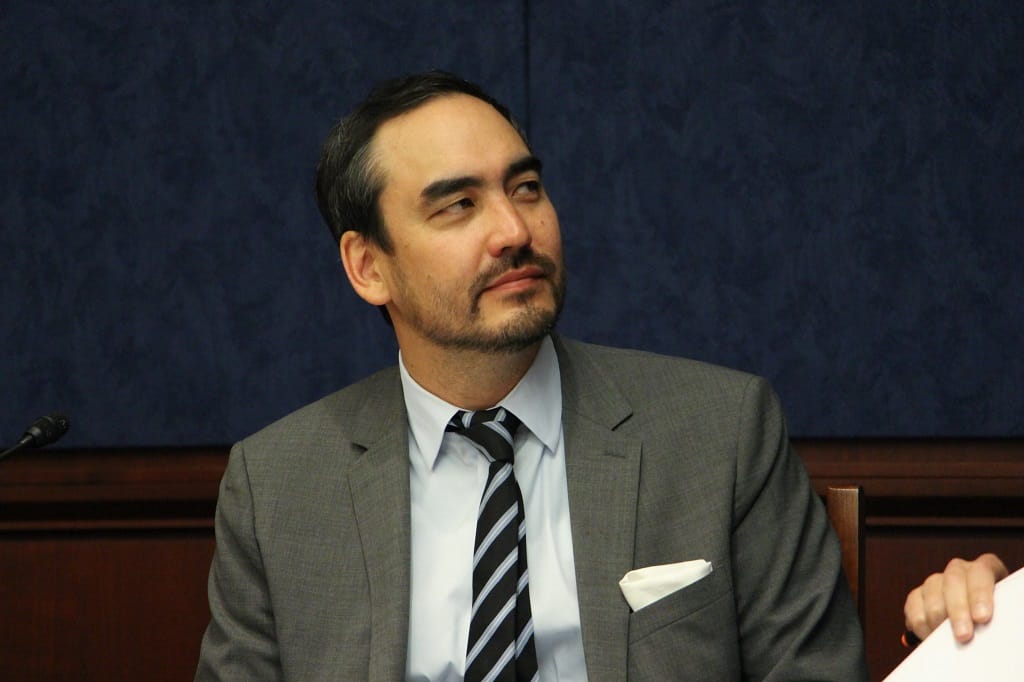Praise For E-Rate Expansion in COVID Relief, Tim Wu at White House, Film on Telecom Law
March 8, 2021—Democrat senators praised their chamber’s passing of a massive stimulus bill that includes money to expand the E-Rate broadband subsidy. The Senate passed on March 6 the $1.9-trillion relief bill, which includes $7.6 billion for the Emergency Connectivity Fund that will go toward exten
Benjamin Kahn

March 8, 2021—Democrat senators praised their chamber’s passing of a massive stimulus bill that includes money to expand the E-Rate broadband subsidy.
The Senate passed on March 6 the $1.9-trillion relief bill, which includes $7.6 billion for the Emergency Connectivity Fund that will go toward extended the E-Rate subsidy from just libraries and schools to households to close the homework gap during the pandemic. The bill now heads to the House of Representatives.
Sens. Ed Markey, D-Mass., Maria Cantwell, D-Wash., Chris Van Hollen, D-Md., Michael Bennet, D-Colo., Maggie Hassan, D-N.H., and Congresswoman Grace Meng, D-Queens, N.Y., lauded the relief bill.
“This funding will help ensure that the ‘homework gap’ does not grow into a damaging learning and opportunity gap for our children,” said Markey, who has long been a proponent of the E-Rate program. He emphasized the role it would play in low-income households, particularly in communities of color and rural areas.
Hassan noted that this legislation was necessary because during the COVID-19 Pandemic, many K-12 children fell behind in their studies and that this $7.6 billion would be vital to ensure that education of children does not continue to be stunted due to a lack of connectivity.
“This significant funding through the E-Rate program will help address the long-standing digital divide that the pandemic has only exacerbated,” she said. “As more students are able to get back to in-person learning, it will continue to be essential that students have access to internet-connectivity devices that are necessary in order for them to keep up with their lessons and complete homework assignments.”
The E-Rate has been expanded in the past to address new concerns, such as modernization efforts in 2014 to provide W-Fi services. Much like in 2014, proponents of the E-Rate supported changes that aimed to address contemporary shortcomings in the program.
What does Tim Wu’s appointment mean?
On March 5, Tim Wu confirmed that he accepted the Biden Administration’s invitation to the National Economic Council to work on technology competition policy.
During a press briefing on the same day, White House Correspondent Jen Psaki assured journalists that his appointment was not meant to signal any specific policy direction, just that Wu’s expertise would be vital in addressing President Joe Biden’s agenda of promoting competition, confronting monopolies, expanding broadband access, and addressing the economic and social concerns raised by social media.
Despite Psaki’s assurance that Wu’s appointment is not indicative of specific policy to come, Wu’s reputation as a critic of Big Tech preceded his arrival at the NEC. In the past, Wu has described tech magnates as modern-day robber barons and drew comparisons to economic behavior associated with the Gilded Age.
In an interview with The New York Times in 2015, Wu stated that his mission “is to fight bullies,” and that he “[likes] standing up for the little guy.”
It remains to be seen if these attitudes will be present in his position at the NEC, but Wu’s appointment certainly appears to be in line with progressive rhetoric up to this point.
New film: ‘When Wire was King’
In a sneak peak of her upcoming documentary, director Jennifer Manner published a clip recounting “the famous Schultz phone call.”
The clip presented the situation immediately preceding and following the phone call between former Secretary of the Treasury George Schultz and the Nixon Administration’s Head of Telecom Policy, Tom Whitehead, in which Schultz inquires about Whitehead’s plans to address phone company monopolies.
The scene illuminates the key players and decisions that ultimately helped to shape the modern telecommunications landscape that Americans are familiar with today.
“When Wire was King” is a feature-length documentary that aims to clarify the historical context surrounding what its producers describe as the “telecommunications revolution,” and seeks to examine the relationship between innovation, competition, and regulation, leading up to the 1970s.










Member discussion